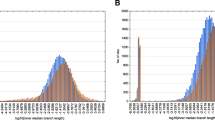Abstract
According to the endosymbiotic theory, mitochondria originate from a free-living alpha-proteobacteria that established an intracellular symbiosis with the ancestor of present-day eukaryotic cells. During the bacterium-to-organelle transformation, the proto-mitochondrial proteome has undergone a massive turnover, whereby less than 20 % of modern mitochondrial proteomes can be traced back to the bacterial ancestor. Moreover, mitochondrial proteomes from several eukaryotic organisms, for example, yeast and human, show a rather modest overlap, reflecting differences in mitochondrial physiology. Those differences may result from the combination of differential gain and loss of genes and retargeting processes among lineages. Therefore, an evolutionary signature, also called “phylogenetic profile”, could be generated for every mitochondrial protein. Here, we present two evolutionary biology approaches to study mitochondrial physiology: the first strategy, which we refer to as “comparative physiology,” allows the de novo identification of mitochondrial proteins involved in a physiological function; the second, known as “phylogenetic profiling,” allows to predict protein functions and functional interactions by comparing phylogenetic profiles of uncharacterized and known components.
Access this chapter
Tax calculation will be finalised at checkout
Purchases are for personal use only
Similar content being viewed by others
References
Perocchi F, Jensen LJ, Gagneur J et al (2006) Assessing systems properties of yeast mitochondria through an interaction map of the organelle. PLoS Genet 2:e170
Pagliarini DJ, Calvo SE, Chang BA et al (2008) A mitochondrial protein compendium elucidates complex I disease biology. Cell 134:112–123
Gabaldón T (2006) Computational approaches for the prediction of protein function in the mitochondrion. Am J Physiol Cell Physiol 291:C1121–C1128
Perocchi F, Gohil VM, Girgis HS (2010) MICU1 encodes a mitochondrial EF hand protein required for Ca(2+) uptake. Nature 467:291–296
Rost B, Liu J, Nair R et al (2003) Automatic prediction of protein function. Cell Mol Life Sci 60:2637–2650
Barrientos A (2003) Yeast models of human mitochondrial diseases. IUBMB Life 55:83–95
Perocchi F, Mancera E, Steinmetz LM (2008) Systematic screens for human disease genes, from yeast to human and back. Mol Biosyst 4:18–29
Prokisch H, Scharfe C, Camp DG (2004) Integrative analysis of the mitochondrial proteome in yeast. PLoS Biol 2:e160
Gabaldón T, Huynen MA (2007) From endosymbiont to host-controlled organelle: the hijacking of mitochondrial protein synthesis and metabolism. PLoS Comput Biol 3:e219
Kihara D (2011) Protein function prediction for omics era. Springer, New York
Gabaldón T, Huynen MA (2005) Lineage-specific gene loss following mitochondrial endosymbiosis and its potential for function prediction in eukaryotes. Bioinformatics 21:144–150
Huynen MA, Snel B, Bork P et al (2001) The phylogenetic distribution of frataxin indicates a role in iron-sulfur cluster protein assembly. Hum Mol Genet 10:2463–2468
Gabaldón T, Rainey D, Huynen MA (2005) Tracing the evolution of a large protein complex in the eukaryotes, NADH:ubiquinone oxidoreductase (Complex I). J Mol Biol 348:857–870
Baughman JM, Perocchi F, Girgis HS (2011) Integrative genomics identifies MCU as an essential component of the mitochondrial calcium uniporter. Nature 476:341–345
Prokisch H, Andreoli C, Ahting U et al (2006) MitoP2: the mitochondrial proteome database—now including mouse data. Nucleic Acids Res 34:D705–D711
Smith AC, Blackshaw JA, Robinson AJ (2012) MitoMiner: a data warehouse for mitochondrial proteomics data. Nucleic Acids Res 40:D1160–D1167
Scharfe C, Lu HH, Neuenburg JK et al (2009) Map** gene associations in human mitochondria using clinical disease phenotypes. PLoS Comput Biol 5:e1000374
Sigrist CJ, de Castro E, Cerutti L et al (2013) New and continuing developments at PROSITE. Nucleic Acids Res 41:D344–D347
Franceschini A, Szklarczyk D, Frankild S et al (2013) STRING v9.1: protein-protein interaction networks, with increased coverage and integration. Nucleic Acids Res 41:D808–D815
Tatusov RL, Koonin EV, Lipman DJ (1997) A genomic perspective on protein families. Science 278:631–7
Ostlund G, Schmitt T, Forslund K et al (2009) InParanoid 7: new algorithms and tools for eukaryotic orthology analysis. Nucleic Acids Res 38:D196–D203
Datta RS, Meacham C, Samad B et al (2009) Berkeley PHOG: PhyloFacts orthology group prediction web server. Nucleic Acids Res 37:W84–W89
Plovanich M, Bogorad RL, Sancak Y et al (2013) MICU2, a paralog of MICU1, resides within the mitochondrial uniporter complex to regulate calcium handling. PLoS One 8:e55785
Raffaello A, De Stefani D, Sabbadin D et al (2013) The mitochondrial calcium uniporter is a multimer that can include a dominant-negative pore-forming subunit. EMBO J 32:2362–2376
Acknowledgment
This work was supported by Deutsche Forschungsgemeinschaft Emmy Noether Programme Grant PE 2053/1-1 and the Bavarian State Ministry of Education, Science and the Arts.
Author information
Authors and Affiliations
Corresponding author
Editor information
Editors and Affiliations
Rights and permissions
Copyright information
© 2015 Springer Science+Business Media New York
About this protocol
Cite this protocol
Cheng, Y., Perocchi, F. (2015). Prediction of Mitochondrial Protein Function by Comparative Physiology and Phylogenetic Profiling. In: Weissig, V., Edeas, M. (eds) Mitochondrial Medicine. Methods in Molecular Biology, vol 1264. Humana Press, New York, NY. https://doi.org/10.1007/978-1-4939-2257-4_28
Download citation
DOI: https://doi.org/10.1007/978-1-4939-2257-4_28
Published:
Publisher Name: Humana Press, New York, NY
Print ISBN: 978-1-4939-2256-7
Online ISBN: 978-1-4939-2257-4
eBook Packages: Springer Protocols




